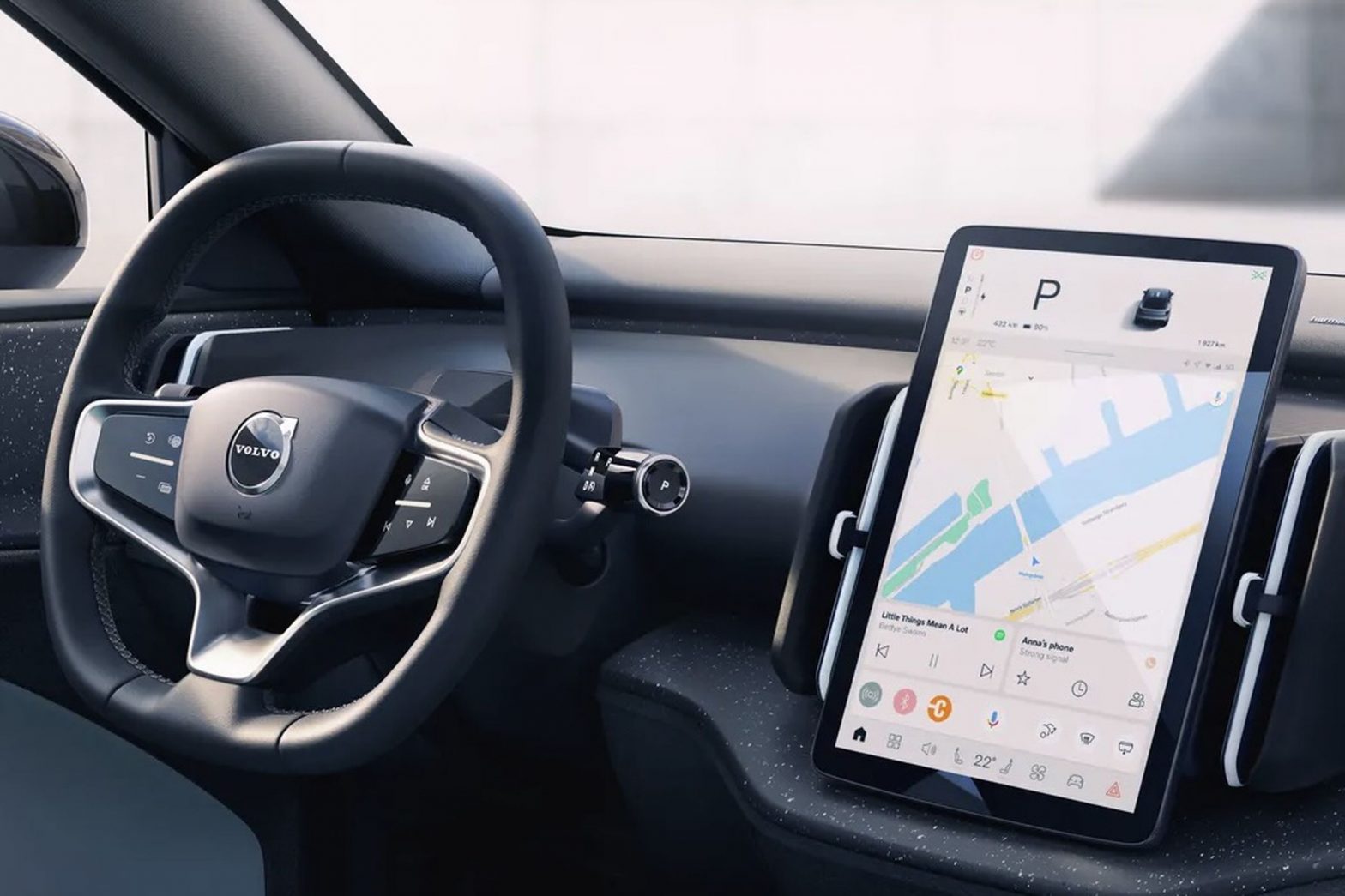/
The Google built-in and Maps software in the new Volvo EX30 EV makes the automaker’s driver speed warning system more accurate — allowing it to pass certification on the EU’s new General Safety Regulation law.
Share this story
:format(webp)/cdn.vox-cdn.com/uploads/chorus_asset/file/24709028/UNDER_EMBARGO_UNTIL_JUNE_7_AT_7_35AM_ET_EX30_8.jpg.jpeg)
Volvo’s EX30 EV with Google built-in has a new in-vehicle speed limit-announcing safety feature that has passed the European General Safety Regulation (GSR) thanks in part to its use of Google Maps data for accuracy. The technology, known widely as Intelligent Speed Assist (ISA), augments the current posted speed limit on the instrument display at all times and warns drivers when they’re going too fast.
ISA isn’t exactly a new feat; many vehicles have had the ability to reproduce speed limit signs for the driver for years. It generally works by vehicles using various visual systems to pick up on posted speed limit signs and often combines that with built-in navigation map data. However, there’s plenty of nuance when it comes to speed limits, including different sign designs and time-of-day speeds, that hurts ISA reliability.
“You need to know things about the road network that you cannot see to know how fast you can drive everywhere,” VP and GM of Google Geo Automotive Jørgen Behrens tells The Verge. “Different companies have rules that, for example, when you enter a built-up area, you have to reduce your speed.”
Behrens explains that car cameras can’t figure everything out, including if speed limit signs are obstructed. So Google’s Maps maintains accuracy by analyzing traffic trends, gathering local data, and cross-referencing street view or third-party partner data. The EU GSR requires vehicles to have 90 percent accuracy for ISA systems.
In case you were wondering, Google Geo is the internal part of Google that handles its Maps product, and the Automotive part is home to the company’s in-vehicle technology ambitions. The department oversees the Google Automotive Services software suite (known externally as Google built-in), Android Automotive OS, and smartphone projected navigation (Android Auto). It also offers Google Cloud services that car companies can use to store data, provides in-vehicle voice technology, and OEM SDK, which allows car companies to make their own navigation system using Google Maps data.
Behrens tells us that Google Geo Automotive offers automakers three different map layers. The first is HD maps that include lane and localization object data to build up autonomous driving systems. The second one is ADAS (advanced driver-assistance systems) Maps, which provides data that can help with safety systems like assisted cruise control and lane keep assist. And the third is the ISA map, which provides accurate and up-to-date speed limit data that helped the Volvo EX30 pass certification with the EU.
The partnership between Volvo and Google to release the new safety feature comes as the European Union gears up to launch new General Safety Regulation (GSR) standards that require new vehicles to warn drivers when they’re going over the speed limit. The regulation goes into effect on new vehicles registered after July 2024. The US National Transportation Safety Board is also looking into ISA and other safety features, like requiring cars to detect if you’re drunk — though no rules are set yet.
Volvo’s been at the forefront of speed-limiting safety features, and now, with its new ISA feature, it’s continuing that trend. As the new regulation looms, automakers are racing to find solutions to earn certification. Self-driving tech company Mobileye has also built an EU GSR-passing Intelligent Speed Assist that could work with other vehicles. Safety features are continuing to grow, but we’re still not at the point where we should count on them to save our lives.
